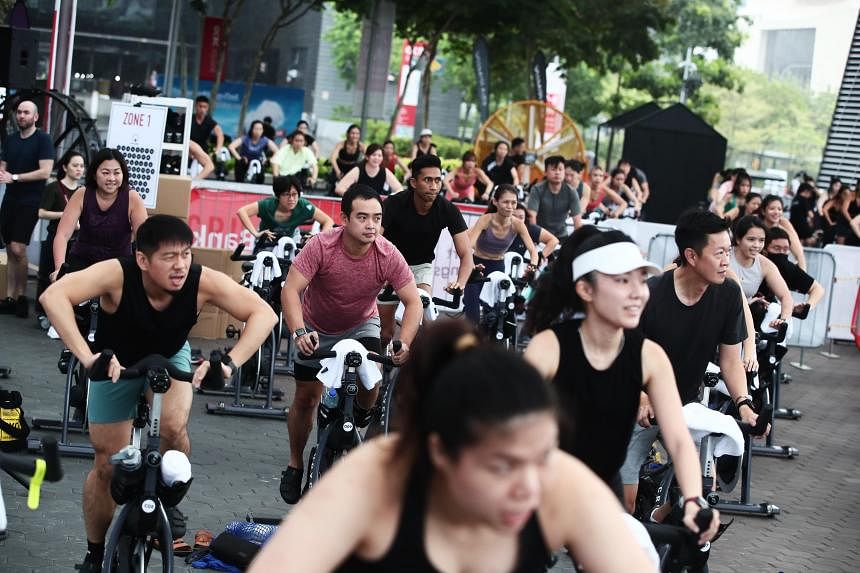SINGAPORE – Exercise is not only key to good health, but also an important way to protect yourself against rising temperatures.
In particular, aerobic exercise such as running, cycling, and jumping rope can help you adapt to the heat by lowering your core body temperature and encouraging quicker sweating to cool your skin.
Mr Joshua Lee, associate consultant in the Department of Sports and Exercise Medicine at Changi General Hospital, said such aerobic exercise also lowers the heart rate, allowing the body to function more efficiently.
Simply Science looks at how you can use cardio to beat the heat.
Heat acclimatization helps reduce the risk of heat illness and improves safety for people who work or exercise in the heat.
Construction workers, soldiers and marathon runners are familiar with the concept of acclimatising to warm weather. In Singapore, new construction workers, especially those coming from colder climates or returning from an extended holiday, are required to undergo a two-week heat acclimatisation programme.
This involves gradually exposing employees to Singapore’s heat and humidity, and increasing the duration and intensity of work over a two-week period.
Scientists around the world are studying how the general population, especially older people, can similarly become more resilient to rising temperatures and prepare for heat waves.
Dr Lee noted that people living in Singapore are already well adapted to the climate and most could tolerate some increase in temperature – the question is whether they are acclimatised to working outdoors under the scorching sun.
“Heatstroke, and particularly death, can occur when there is a sudden and significant increase in temperature, for example during a heatwave,” he said.
The key to proper and safe acclimatization is to start with a good fitness level.
“If you’re not physically fit, I would recommend building up some fitness before starting heat acclimatisation. Improving your aerobic fitness is in itself a very effective way to beat the heat,” said Associate Professor Jason Lee, from the National University of Singapore’s Yong Loo Lin School of Medicine (NUS School of Medicine).
Individuals can first exercise in a cool environment to build up their baseline aerobic fitness, then move to a hot environment and slowly increase the duration and intensity of their exercise over a period of two to three weeks, added Prof Lee, who is also director of NUS Medicine’s Centre for Heat Tolerance and Performance.
Dr. Lee recommends increasing the intensity and duration of outdoor physical activity by 20 percent each day.
“When you do light or short periods of physical work in the heat, you’re only acclimatized to the light and short periods of work. More intense work or longer periods of work require more acclimatization,” he added.
Both experts stressed the need for adequate rest and cooling down between sessions.
People with chronic illnesses such as diabetes or heart disease can also improve their aerobic exercise capacity within their own capabilities by consulting with a doctor. However, if you experience symptoms such as heatstroke, dizziness, or chest pain, you should stop exercising or consult a doctor.
Some medications used to treat chronic diseases, including blood thinners, drugs used to treat Alzheimer’s disease, and some chemotherapy drugs, can interfere with the body’s ability to lose heat and regulate core temperature.

